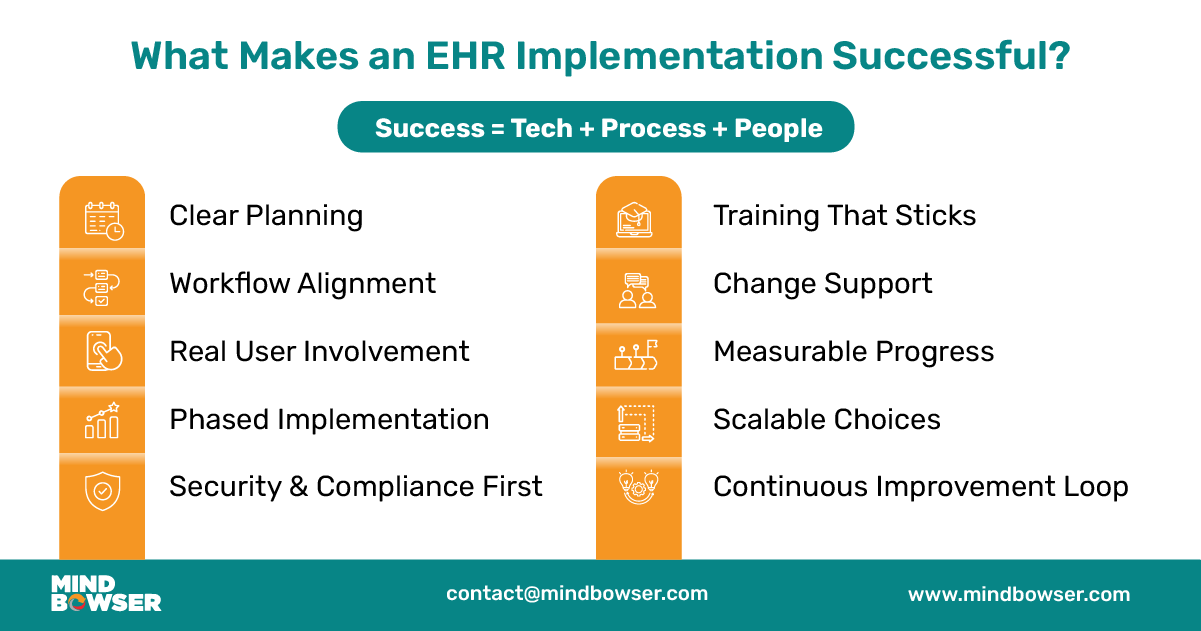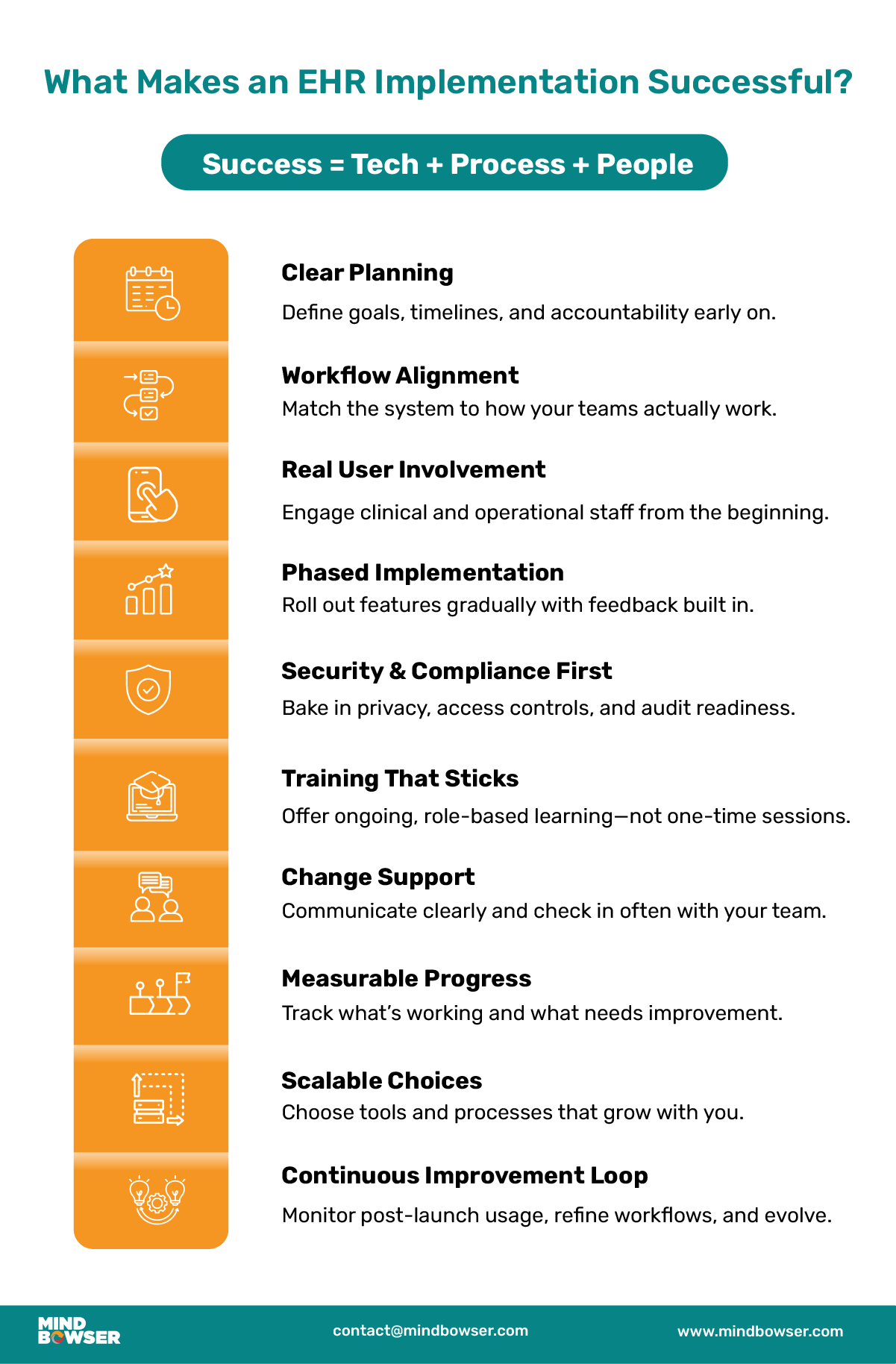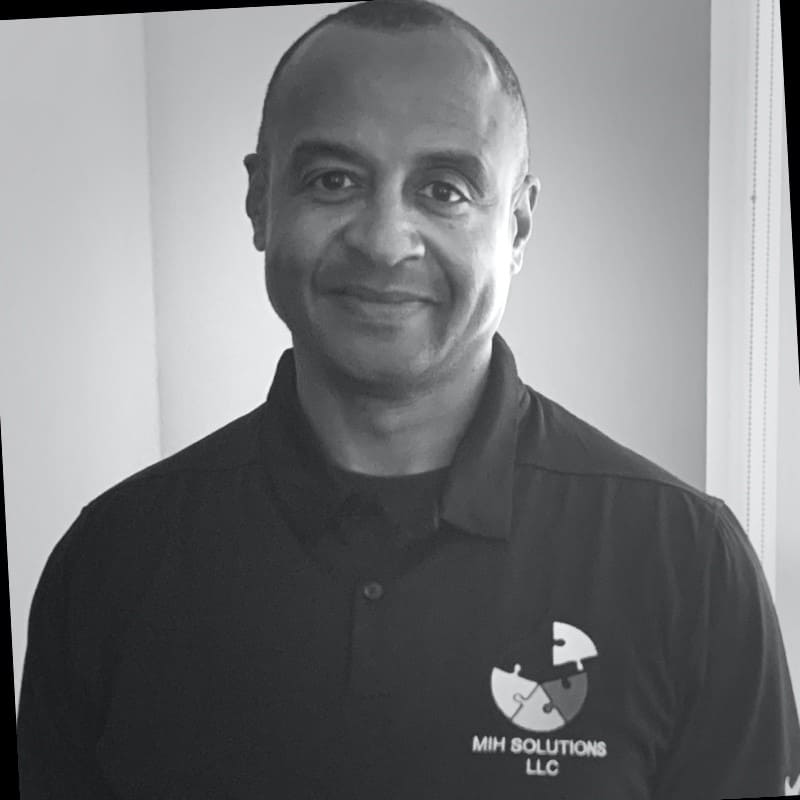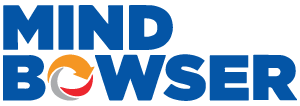Electronic Health Records (EHRs) have become a core part of how healthcare is delivered and documented today. From digitizing patient history to enabling real-time collaboration across care teams, EHRs hold the promise of better coordination, faster decisions, and fewer administrative bottlenecks.
But here’s the catch—EHR integration isn’t just about picking the right software and going live. It’s a significant organizational change. And too often, it’s where things start to break. Despite the good intentions, many EHR implementations fall short. Not because the technology doesn’t work, but because the process wasn’t built around how people work.
Whether you’re a hospital, a specialty clinic, or a digital health startup, avoiding the common pitfalls can make all the difference between a smooth transition and a chaotic one.
In this blog, I’ll walk you through the most common EHR implementation mistakes we’ve seen across projects—and more importantly, how to avoid them. Where it makes sense, I’ll also mention solution accelerators we’ve built at Mindbowser to make some of these challenges easier to handle.
Let’s start with the first one, which can trip up even the most experienced teams.
One of the most common mistakes we see is diving into EHR implementation without a solid plan. It usually starts with good intentions—modernizing the system, improving workflows, and staying compliant. But without a clear strategy, teams often end up reacting to problems instead of preventing them.
Many projects begin without defining what success looks like. Is it faster charting? Better care coordination? Reduced documentation errors? If those targets aren’t set upfront, it’s hard to measure progress or course-correct when needed.
Another issue is skipping over the “how” and “when.” A roadmap isn’t just a Gantt chart—it’s a reality check that keeps everyone aligned on scope, milestones, resource allocation, and deadlines. Without it, timelines stretch, budgets bloat, and trust erodes.
A well-implemented EHR should support your care goals, not disrupt them. We’ve seen setups where the EHR added tasks instead of streamlining them, simply because the implementation didn’t consider the day-to-day realities of providers and support staff.
To avoid these early stumbles, we recommend starting with a structured assessment during the planning phase. This helps teams clarify their priorities, map out workflows, and identify potential blockers before any development begins. With the right visibility into timelines, goals, and dependencies, you can reduce guesswork and set a strong foundation for the entire implementation.


It’s easy to treat EHR implementation like an IT project. But the truth is—it’s a people project. If the people who use the system every day aren’t heard, the system won’t work the way it should.
When decisions are made without input from physicians, nurses, medical assistants, or admin staff, you miss valuable insights. These are the people who know what happens on the floor. Ignoring their perspective often leads to systems that look great on paper but don’t function in real life.
Another red flag is rolling out features without testing them with real users. You end up with clunky workflows, extra clicks, and frustration. And when feedback isn’t invited or acted upon, users disengage. The system becomes something they tolerate, not something they trust.
The impact? Low adoption, increased resistance, and a lot of shadow systems. Users will find workarounds, which defeat the purpose of having a centralized EHR in the first place.
To avoid these early stumbles, we recommend starting with a structured assessment during the planning phase. This helps teams clarify their priorities, map out workflows, and identify potential blockers before any development begins. With the right visibility into timelines, goals, and dependencies, you can reduce guesswork and set a strong foundation for the entire implementation.
Choosing the right vendor isn’t just a box to tick—it’s a long-term partnership. And yet, too many organizations select vendors based on flashy demos or price tags without thoroughly examining their fit, support, or domain expertise.
It’s tempting to go with the lowest bid, especially when budgets are tight. But cheaper upfront often means more patchwork down the line—custom modules, manual workarounds, or additional third-party integrations that weren’t factored in initially.
Healthcare isn’t like any other industry. A general-purpose vendor might not understand things like prior authorizations, clinical pathways, or the nuance of interoperability standards like FHIR. That gap leads to slower builds, more errors, and systems that don’t comply with regulatory expectations.
You need a system that can grow with you, whether that means adding locations, new specialties, or remote care workflows. If the vendor’s tech stack can’t adapt, you’re looking at another implementation in a few years.
We’ve seen poor vendor choices lead to integration headaches later. That’s why it’s important to assess how easily a system can connect with others and support future needs like interoperability. Taking time to evaluate these factors early—using proven integration approaches like HealthConnect CoPilot—helps avoid lock-in and ensures smoother scaling as your needs grow.
You can have the most powerful EHR in the world—but if your team doesn’t know how to use it, it won’t matter. One of the biggest reasons EHR rollouts stall or fail is that training is treated like a checkbox, not a process.
Training sessions often happen just before go-live, and that’s it. But learning a new system takes time, especially when it’s layered over already busy schedules. Without refresher sessions or just-in-time help, users end up guessing—or worse, abandoning key features altogether.
Not everyone uses the EHR the same way. Front-desk staff, nurses, billing teams, and physicians each need a different lens. When everyone is given the same generic training, it leads to confusion, inefficiency, and mistakes in documentation or workflows.
Even after go-live, users need a way to ask questions, resolve roadblocks, and stay updated on new features. Without that, frustration builds and productivity takes a hit.
We design onboarding workflows that focus on role-specific training and continuous feedback during rollout. This helps teams spot where users are struggling and address issues early—before they turn into bigger problems.
Migrating data from legacy systems into a new EHR isn’t just a technical task—it’s a clinical responsibility. If the migration isn’t handled carefully, it can create gaps in care, regulatory risks, and broken trust.
One of the most common issues is losing critical patient history during the switch. Lab results, medications, allergies, or even progress notes might be left behind or mapped incorrectly. This isn’t just an inconvenience—it can be dangerous for patient safety.
Some teams rely too heavily on the migration tool or vendor script without verifying the quality of the data post-migration. That’s risky. If corrupted or mismatched data slips through, your clinical and billing workflows can both be compromised.
Things can go wrong. If there’s no clear rollback strategy or versioned backup, you’re left with no safety net. That can mean days of downtime—or even worse, loss of patient trust due to misfiled or missing information.
We approach data migration as a phased, test-driven process. Each step is carefully monitored to catch issues early, ensure data accuracy, and maintain traceability, reducing the risk of disruptions or compliance concerns later on.
Related Read: Elevating Healthcare Experiences: A Deep Dive into UI/UX in Healthcare
A well-designed EHR should support the way your team already works, not force everyone to adapt to a rigid system. Ignoring clinical workflows during implementation is a sure way to add friction, slow down productivity, and frustrate users.
Many teams skip the foundational step of documenting current workflows. That means the new system is built in isolation, without understanding how information flows between departments, what bottlenecks exist, or which processes rely on quick decision-making.
Instead of simplifying things, the EHR sometimes adds more steps—extra clicks to chart a note, multiple screens to schedule an appointment, or unnecessary handoffs. These small inefficiencies pile up fast and lead to burnout.
If the interface isn’t intuitive, users will either take longer to complete tasks or find workarounds. And when providers start spending more time on screens than with patients, it defeats the purpose of digital transformation.
We always begin by closely analyzing existing clinical workflows to understand how tasks, handoffs, and data flow across teams. This helps uncover inefficiencies, spot redundancies, and identify where automation or integration can make a meaningful impact—without disrupting how care is delivered today.
Related Read: How AI Integration is Transforming Mental Healthcare and EHR Workflows
When implementing an EHR system, overlooking privacy and security is a serious mistake—one that can have both regulatory and reputational consequences. HIPAA violations, patient data breaches, and access mismanagement are not just IT problems—they directly affect patient trust.
Not all EHR systems come with security by default. If access controls, encryption, and audit trails aren’t configured properly, sensitive health information could be exposed or manipulated. Even a small misstep in PHI handling can result in legal trouble.
Access should be based on the principle of least privilege. When everyone in the organization has access to everything—intentionally or not—it increases the risk of misuse and unauthorized exposure.
Security isn’t a one-time setup. Without ongoing audits, penetration testing, or monitoring systems in place, threats go unnoticed until it’s too late. Many organizations falsely assume that once the EHR is deployed, the security box is checked.
We treat compliance as a core part of the implementation process—not something to bolt on later. By addressing privacy, security, and regulatory requirements from the start, teams can avoid costly rework and maintain patient trust.
Rolling out an EHR is not just a tech shift—it’s a cultural shift. Teams are changing the way they work, communicate, and deliver care. When that change isn’t managed well, even the best software can feel like a burden instead of a solution.
Without clear communication, rumors spread faster than facts. Staff might think their jobs are at risk or that the new system will slow them down. If the “why” behind the change isn’t communicated, you’ll face resistance before the rollout even starts.
People don’t resist change—they resist change that’s forced on them. If they don’t see how the system benefits their day-to-day work, they’ll default to the old ways. That leads to low adoption, missed documentation, and a patchwork of disconnected processes.
Sometimes leadership is ready, but the floor isn’t. If staff don’t have time to adapt or if their feedback loops are ignored, change fatigue sets in. That’s when even the smallest technical issue can trigger bigger frustrations.
We treat change management as part of the implementation, not an afterthought. By building in clear communication, role-specific updates, and regular feedback points, teams stay informed, aligned, and better equipped to adapt throughout the process.
It’s natural to want your EHR to do everything your way. But chasing perfection too early can lead to unnecessary complexity, rising costs, and long-term maintenance headaches.
Many teams get caught up in customizing every little feature—adding new templates, altering workflows, integrating third-party tools—before fully understanding the base system. This leads to bloat, delays, and a system that’s hard to scale or troubleshoot.
Custom modules can feel like a win during development, but quickly become liabilities without version control, documentation, or ownership. When staff turnover happens or system updates roll out, these features often break, causing critical issues in clinical workflows.
More customization means more testing, more maintenance, and more risk. What starts as a simple improvement could lead to cascading failures if it’s not aligned with core EHR upgrades or compliance protocols.
We encourage teams to prioritize flexibility over over-engineering. Rather than customizing everything from scratch, focus on solutions that can evolve alongside your needs—without making the system harder to maintain or scale later.
A successful go-live is just the beginning, not the end. But many organizations treat it like the finish line. When post-launch support is skipped or underfunded, small issues fester, users feel abandoned, and momentum is lost.
Once the system is live, teams often shift their focus elsewhere. But this is exactly when users start facing real challenges. Without continued support, adoption stalls, and the system drifts from what it was intended to do.
Providers need someone to call when they hit a wall. Whether it’s a question about documentation workflows, integration bugs, or performance issues, support shouldn’t just be a helpdesk ticket lost in a queue.
Post-launch, it’s important to track usage, measure adoption, identify inefficiencies, and continuously refine workflows. If there’s no feedback loop, the system slowly becomes outdated, no matter how modern it was at launch.
A strong post-go-live plan should include regular check-ins, usage monitoring, and workflow reviews. This ongoing process helps identify what’s working, where users are struggling, and how the system can be refined over time.

EHR systems are meant to simplify care, streamline operations, and support better decisions. But too often, they fall short—not because the technology failed, but because the implementation missed the mark.
From poor planning to post-launch neglect, each of the EHR implementation mistakes we’ve covered can be avoided with the right mindset and process. It’s not about doing everything at once. It’s about doing the right things at the right time—and keeping your team involved, informed, and supported at every stage.
Our approach is shaped by real-world challenges we’ve seen during EHR rollouts. Success doesn’t come from tech alone—it’s about combining the right tools with thoughtful planning, clear processes, and a deep understanding of how care teams work.
Need help avoiding these EHR pitfalls? Let’s schedule a quick call to assess your readiness and map the next steps—no strings attached.
The most common mistake is inadequate planning—rushing into implementation without a clear roadmap, defined goals, or alignment with clinical workflows.
Timelines vary, but a typical implementation can take 6 to 18 months, depending on the size of the organization, data migration needs, and customization requirements.
Start by involving users early, offering role-specific training, and maintaining feedback loops. Workflows like ChatIQ help drive ongoing support and engagement.
Excessive customization early on can complicate maintenance. Start with core workflows and utilize modular solutions like Appointly or AutoConfirm AI, then evolve the system based on real usage data.

We worked with Mindbowser on a design sprint, and their team did an awesome job. They really helped us shape the look and feel of our web app and gave us a clean, thoughtful design that our build team could...


The team at Mindbowser was highly professional, patient, and collaborative throughout our engagement. They struck the right balance between offering guidance and taking direction, which made the development process smooth. Although our project wasn’t related to healthcare, we clearly benefited...

Founder, Texas Ranch Security

Mindbowser played a crucial role in helping us bring everything together into a unified, cohesive product. Their commitment to industry-standard coding practices made an enormous difference, allowing developers to seamlessly transition in and out of the project without any confusion....

CEO, MarketsAI

I'm thrilled to be partnering with Mindbowser on our journey with TravelRite. The collaboration has been exceptional, and I’m truly grateful for the dedication and expertise the team has brought to the development process. Their commitment to our mission is...

Founder & CEO, TravelRite

The Mindbowser team's professionalism consistently impressed me. Their commitment to quality shone through in every aspect of the project. They truly went the extra mile, ensuring they understood our needs perfectly and were always willing to invest the time to...

CTO, New Day Therapeutics

I collaborated with Mindbowser for several years on a complex SaaS platform project. They took over a partially completed project and successfully transformed it into a fully functional and robust platform. Throughout the entire process, the quality of their work...

President, E.B. Carlson

Mindbowser and team are professional, talented and very responsive. They got us through a challenging situation with our IOT product successfully. They will be our go to dev team going forward.

Founder, Cascada

Amazing team to work with. Very responsive and very skilled in both front and backend engineering. Looking forward to our next project together.

Co-Founder, Emerge

The team is great to work with. Very professional, on task, and efficient.

Founder, PeriopMD

I can not express enough how pleased we are with the whole team. From the first call and meeting, they took our vision and ran with it. Communication was easy and everyone was flexible to our schedule. I’m excited to...

Founder, Seeke

We had very close go live timeline and Mindbowser team got us live a month before.

CEO, BuyNow WorldWide

Mindbowser brought in a team of skilled developers who were easy to work with and deeply committed to the project. If you're looking for reliable, high-quality development support, I’d absolutely recommend them.

Founder, Teach Reach

Mindbowser built both iOS and Android apps for Mindworks, that have stood the test of time. 5 years later they still function quite beautifully. Their team always met their objectives and I'm very happy with the end result. Thank you!

Founder, Mindworks

Mindbowser has delivered a much better quality product than our previous tech vendors. Our product is stable and passed Well Architected Framework Review from AWS.

CEO, PurpleAnt

I am happy to share that we got USD 10k in cloud credits courtesy of our friends at Mindbowser. Thank you Pravin and Ayush, this means a lot to us.

CTO, Shortlist

Mindbowser is one of the reasons that our app is successful. These guys have been a great team.

Founder & CEO, MangoMirror

Kudos for all your hard work and diligence on the Telehealth platform project. You made it possible.

CEO, ThriveHealth

Mindbowser helped us build an awesome iOS app to bring balance to people’s lives.

CEO, SMILINGMIND

They were a very responsive team! Extremely easy to communicate and work with!

Founder & CEO, TotTech

We’ve had very little-to-no hiccups at all—it’s been a really pleasurable experience.

Co-Founder, TEAM8s

Mindbowser was very helpful with explaining the development process and started quickly on the project.

Executive Director of Product Development, Innovation Lab

The greatest benefit we got from Mindbowser is the expertise. Their team has developed apps in all different industries with all types of social proofs.

Co-Founder, Vesica

Mindbowser is professional, efficient and thorough.

Consultant, XPRIZE

Very committed, they create beautiful apps and are very benevolent. They have brilliant Ideas.

Founder, S.T.A.R.S of Wellness

Mindbowser was great; they listened to us a lot and helped us hone in on the actual idea of the app. They had put together fantastic wireframes for us.

Co-Founder, Flat Earth

Mindbowser was incredibly responsive and understood exactly what I needed. They matched me with the perfect team member who not only grasped my vision but executed it flawlessly. The entire experience felt collaborative, efficient, and truly aligned with my goals.

Founder, Child Life On Call

The team from Mindbowser stayed on task, asked the right questions, and completed the required tasks in a timely fashion! Strong work team!

CEO, SDOH2Health LLC

Mindbowser was easy to work with and hit the ground running, immediately feeling like part of our team.

CEO, Stealth Startup

Mindbowser was an excellent partner in developing my fitness app. They were patient, attentive, & understood my business needs. The end product exceeded my expectations. Thrilled to share it globally.

Owner, Phalanx

Mindbowser's expertise in tech, process & mobile development made them our choice for our app. The team was dedicated to the process & delivered high-quality features on time. They also gave valuable industry advice. Highly recommend them for app development...

Co-Founder, Fox&Fork
